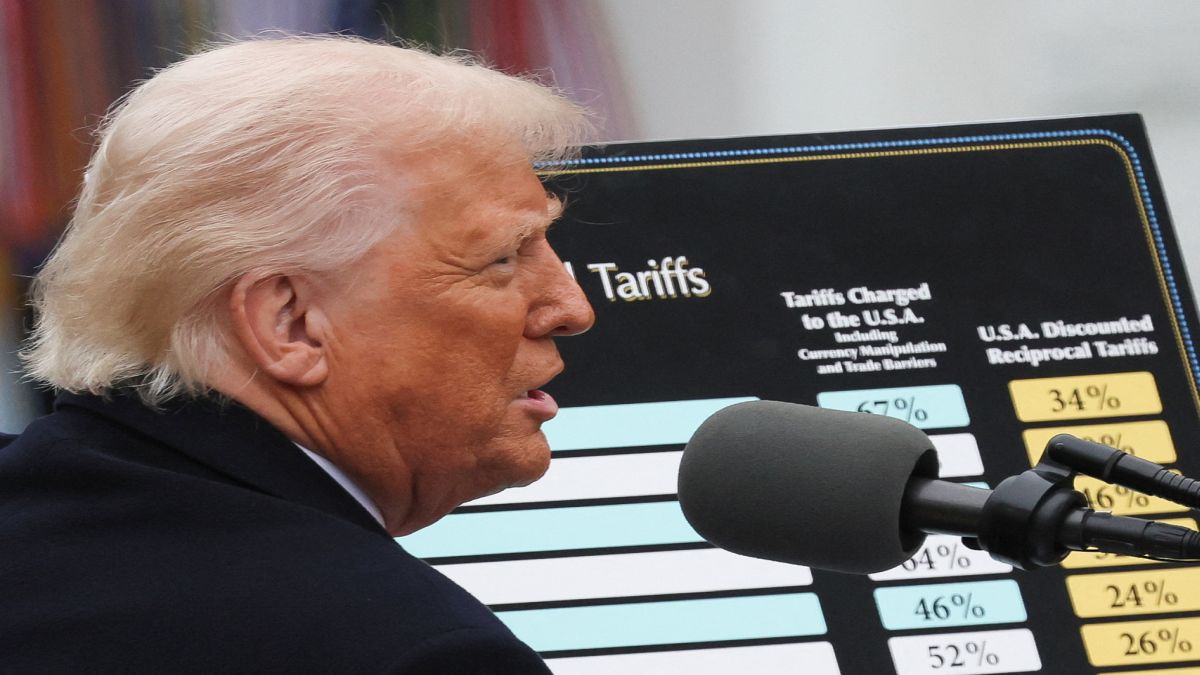Is the trade deal between India and the US imminent?
US President Donald Trump has claimed that a “very big” deal with India could come soon.
Trump’s remarks came as Indian negotiators landed in the United States on Friday for the final round of talks on a bilateral trade agreement (BTA).
Trump on April 2 – which he had dubbed ‘liberation day’ – had announced tariffs on dozens of nations.
Trump later paused his ‘reciprocal tariffs’ and issued a 90-day deadline for countries to reach bilateral trade deals with America.
That deadline is set to expire on July 9.
“Everybody wants to make a deal and have a part of it… we just signed with China yesterday. We are having some great deals. We have one coming up, maybe with India. A very big one. Where we’re going to open up India. In the China deal, we are starting to open up China,” Trump said on Friday.
“We’re not going to make deals with everybody. Some, we are just going to send them a letter, say thank you very much… My people don’t want to do it that way. They want to do some of it, but they want to make more deals than I would do”.
But what’s in this ‘very big pact’? What do experts think?
Let’s take a closer look:
What’s in this ‘very big’ pact?
India’s team is being led by Rajesh Aggarwal.
Aggarwal, who is the chief negotiator, will be dealing with US officials including those from the Office of the United States Trade Representative (USTR).
Trade between India and the United States touched $131.84 billion in the 24-25 Financial Year.
If no deal is reached, India will face a base tariff of 10 per cent – lower than the 26 per cent Trump originally imposed.
The US wants India to open up its agriculture, dairy, aviation and energy sectors.
It wants India to reduce tariffs on soy, wheat, ethanol and corn – two of which are its top exports to China.
The US also wants less tariffs on apples.
Reports say the meetings between the two sides have been contentious at times – with the Indian side pushing back on US demands particularly when it comes to its sensitive agriculture and dairy market.
The US also wants to sell genetically modified (GM) crops in India.
However, the Indian side is pushing back to protect Indian farmers.
They also say they do not want to undercut the Minimum Support Price (MSP) system in India.
A NITI Aayog working paper in May suggested that New Delhi offer some concessions on “soybean oil imports” to help redress the trade imbalance – which has become an obsession for Trump.
India is the world’s biggest importer of edible oil.
India may agree to reduce tariffs on automobiles – a long-pending demand of the US.
India, on the other hand, wants the US to roll back its reciprocal tariffs to zero.
New Delhi also wants Washington to cut tariffs on steel and auto parts.
The US had imposed a 50 per cent tariff on steel and aluminium, and a 25 per cent tariff on automobile imports from India.
But there is a stumbling block.
“The US side first wants India to commit to deeper import tariff cuts on farm goods like soybeans and corn , cars and alcoholic beverages along with easing of non-tariff barriers,” an official in the know has said.
What do experts think?
Experts think a bilateral trade deal (BTA) could benefit traders exporting textiles, gems and jewellery, smartphones and pharmaceuticals to the US.
However, they say a BTA could benefit US exporters particularly those sending walnuts, pistachios and cranberries more.
They say this is because many of New Delhi’s exports to Washington already have duty-free access to the market.
They say the rest could get only a limited boost.
Which is perhaps why some have suggested caution.
“The ball is now in the US court. India is not for any win-lose trade partnership,” Ram Singh, chief of the Indian Institute of Foreign Trade, told The Times of India.
The Global Trade Research Initiative, for example, has warned against a deal that favours the US.
“The more likely outcome is a limited trade pact - styled after the US-UK mini trade deal announced on May 8,” GTRI Founder Ajay Srivastava said. “Any trade deal with the US must not be politically driven or one-sided, it must protect our farmers, our digital ecosystem, and our sovereign regulatory space.”
“There may also be pressure on India to ease FDI restrictions in multi-brand retail, potentially benefiting firms like Amazon and Walmart and to liberalise rules on remanufactured goods, currently subject to stringent import norms,” Srivastava added.
“India must hold its ground and insist on a reciprocal, balanced, and transparent agreement,” the think-tank added.
Indian officials have insisted that the country’s interests will come first in any deal.
“Protecting India’s interests will be supreme in India-US BTA talks,” an Indian official in the know said.
Modi and Trump in February had agreed to increase bilateral trade, which was at $262 billion in 2024, to $500 billion by 2030.
)